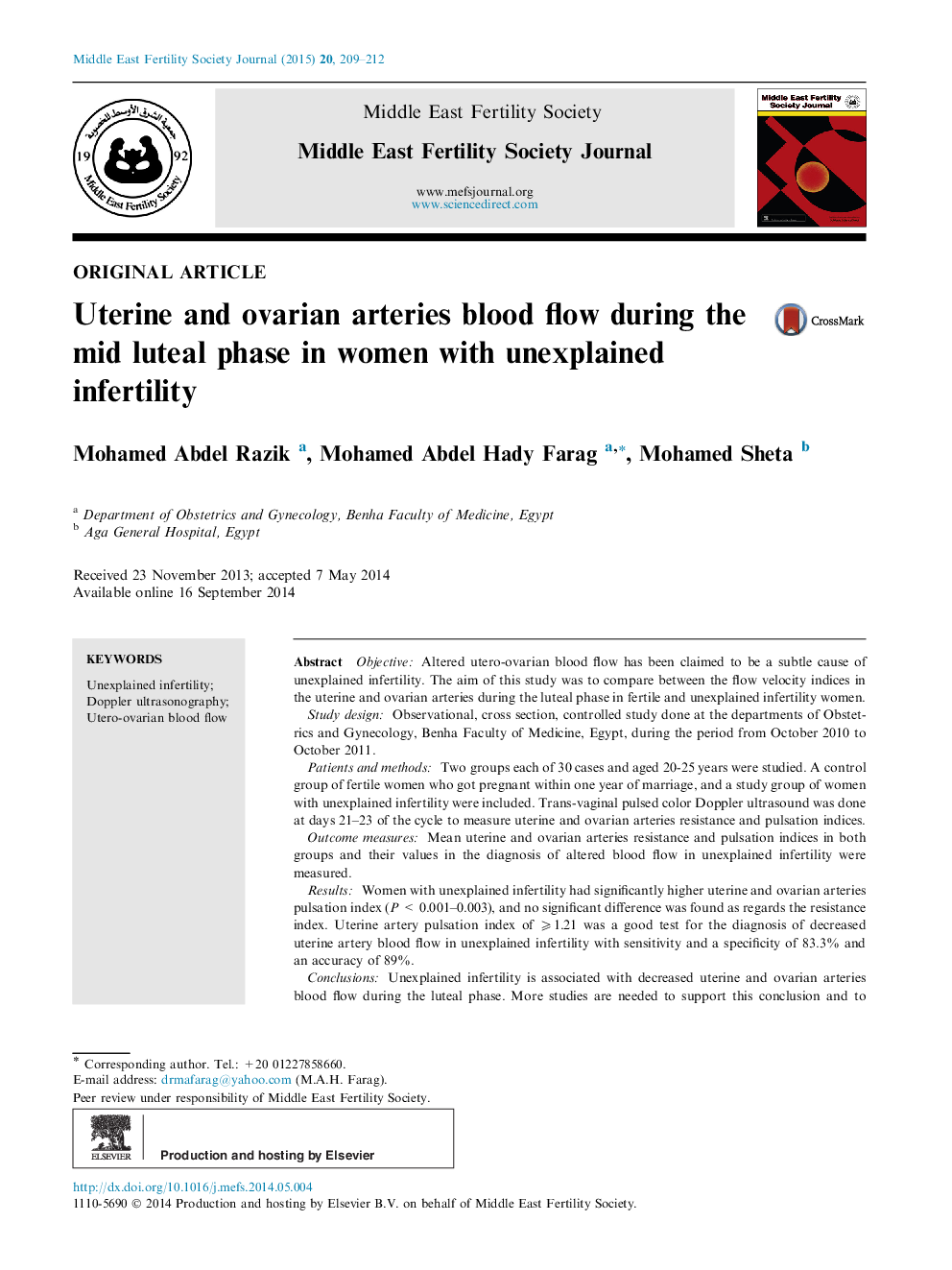| Article ID | Journal | Published Year | Pages | File Type |
|---|---|---|---|---|
| 3966105 | Middle East Fertility Society Journal | 2015 | 4 Pages |
ObjectiveAltered utero-ovarian blood flow has been claimed to be a subtle cause of unexplained infertility. The aim of this study was to compare between the flow velocity indices in the uterine and ovarian arteries during the luteal phase in fertile and unexplained infertility women.Study designObservational, cross section, controlled study done at the departments of Obstetrics and Gynecology, Benha Faculty of Medicine, Egypt, during the period from October 2010 to October 2011.Patients and methodsTwo groups each of 30 cases and aged 20-25 years were studied. A control group of fertile women who got pregnant within one year of marriage, and a study group of women with unexplained infertility were included. Trans-vaginal pulsed color Doppler ultrasound was done at days 21–23 of the cycle to measure uterine and ovarian arteries resistance and pulsation indices.Outcome measuresMean uterine and ovarian arteries resistance and pulsation indices in both groups and their values in the diagnosis of altered blood flow in unexplained infertility were measured.ResultsWomen with unexplained infertility had significantly higher uterine and ovarian arteries pulsation index (P < 0.001–0.003), and no significant difference was found as regards the resistance index. Uterine artery pulsation index of ⩾1.21 was a good test for the diagnosis of decreased uterine artery blood flow in unexplained infertility with sensitivity and a specificity of 83.3% and an accuracy of 89%.ConclusionsUnexplained infertility is associated with decreased uterine and ovarian arteries blood flow during the luteal phase. More studies are needed to support this conclusion and to evaluate the possible role of perfusion enhancer drugs in increasing utero-ovarian blood flow and enhancing pregnancy.
